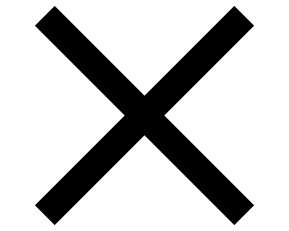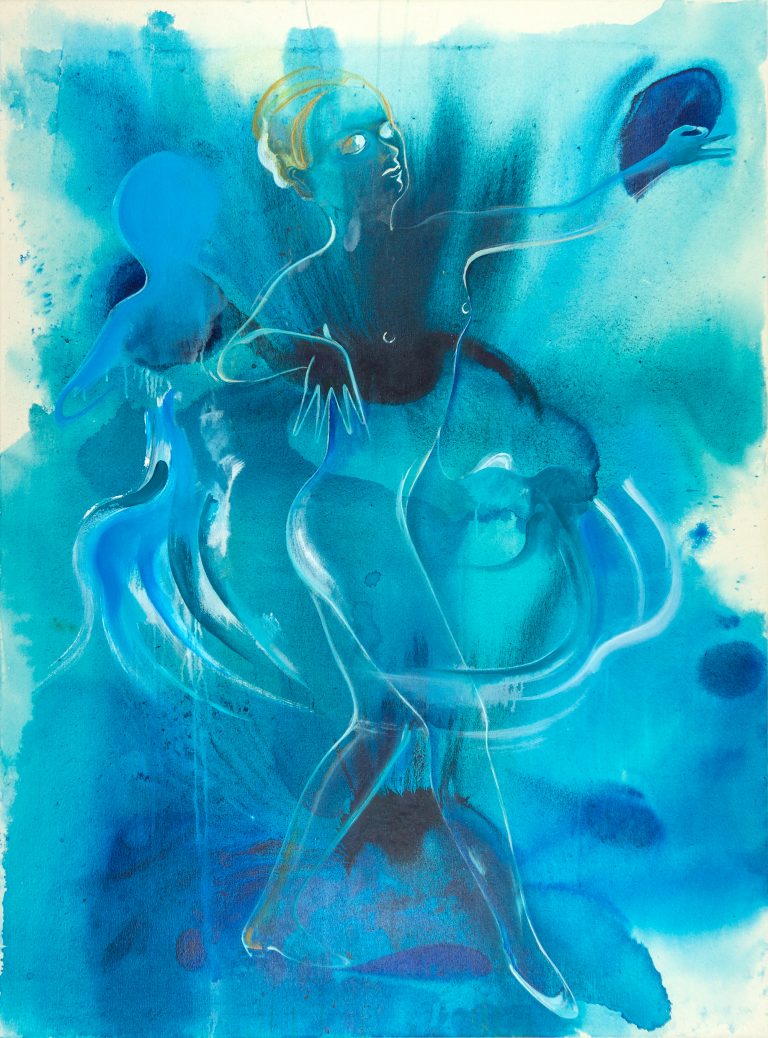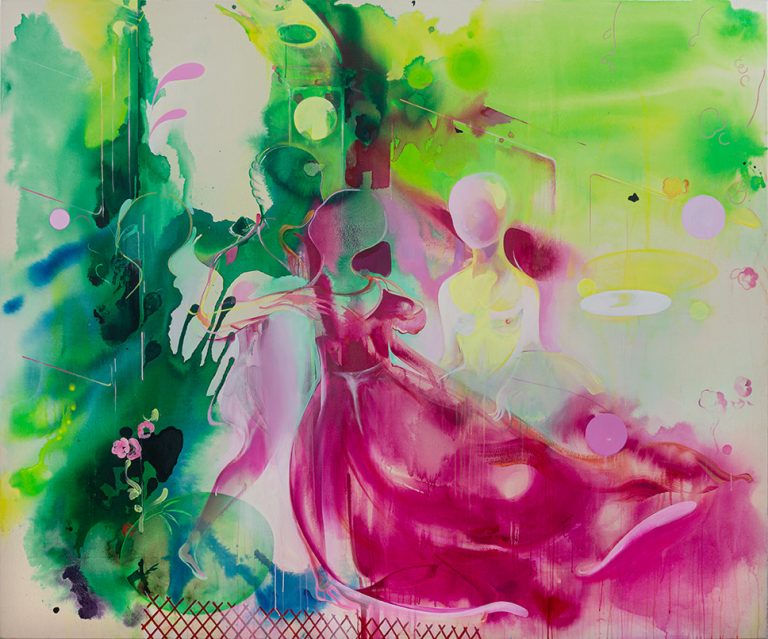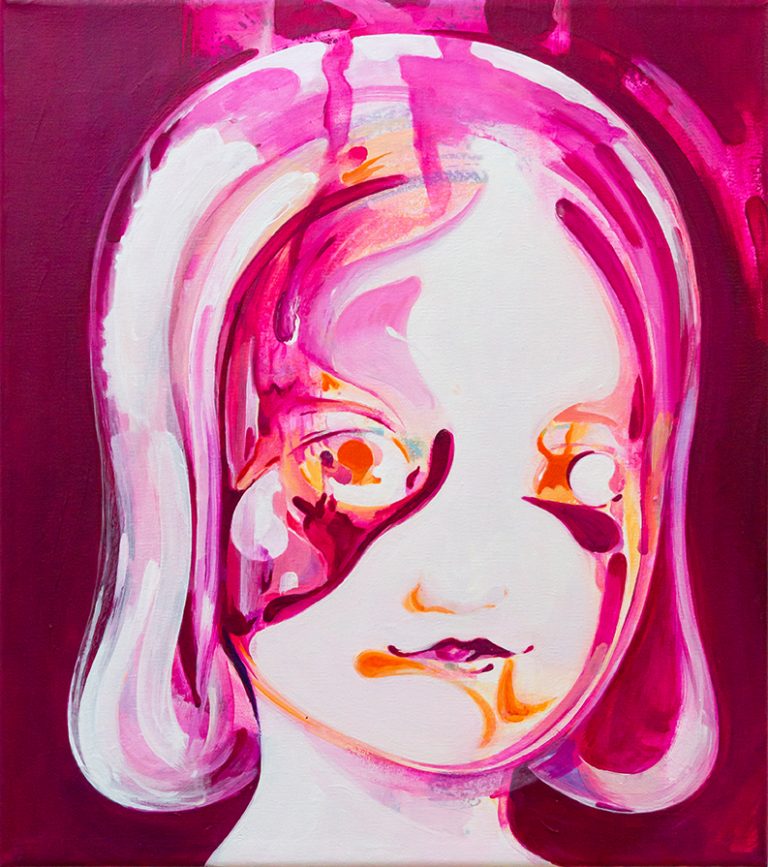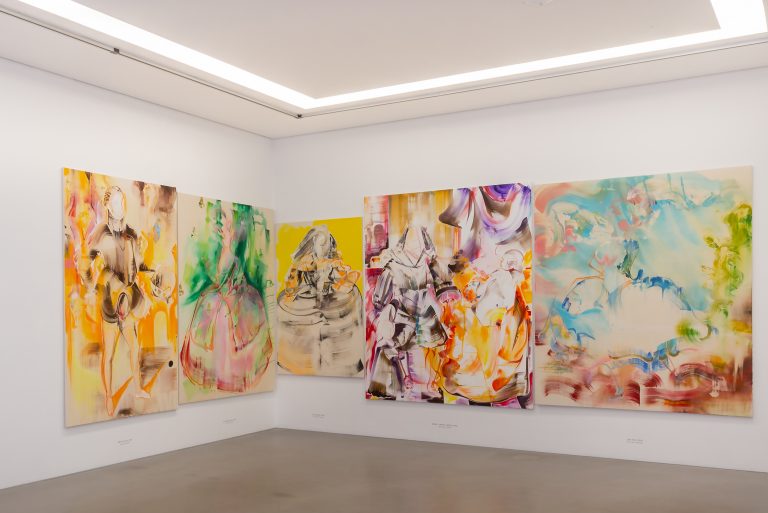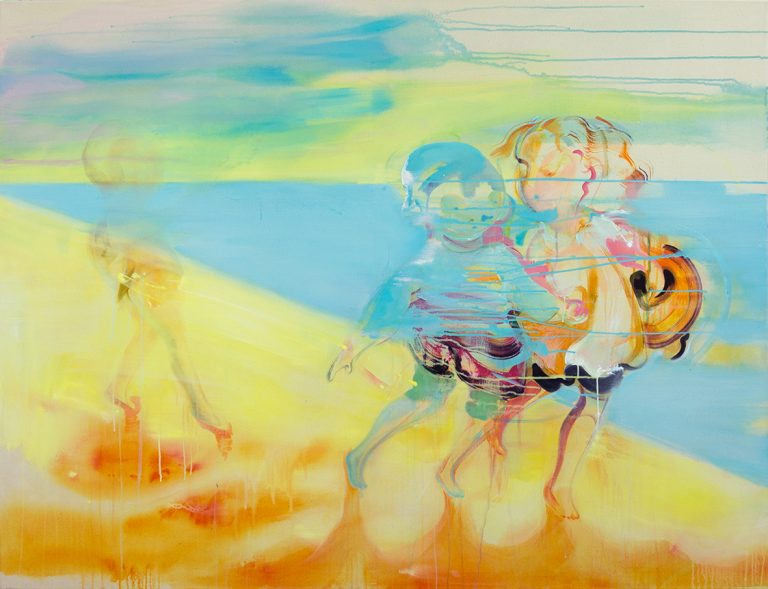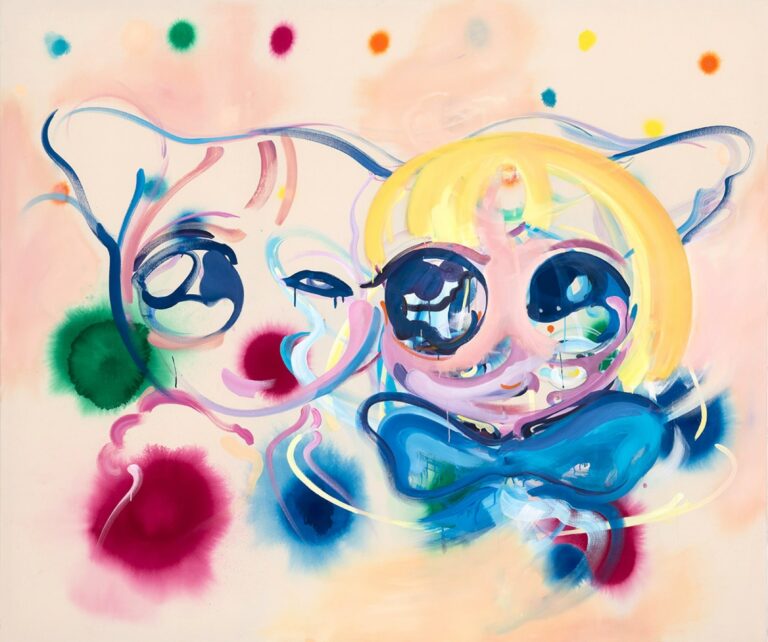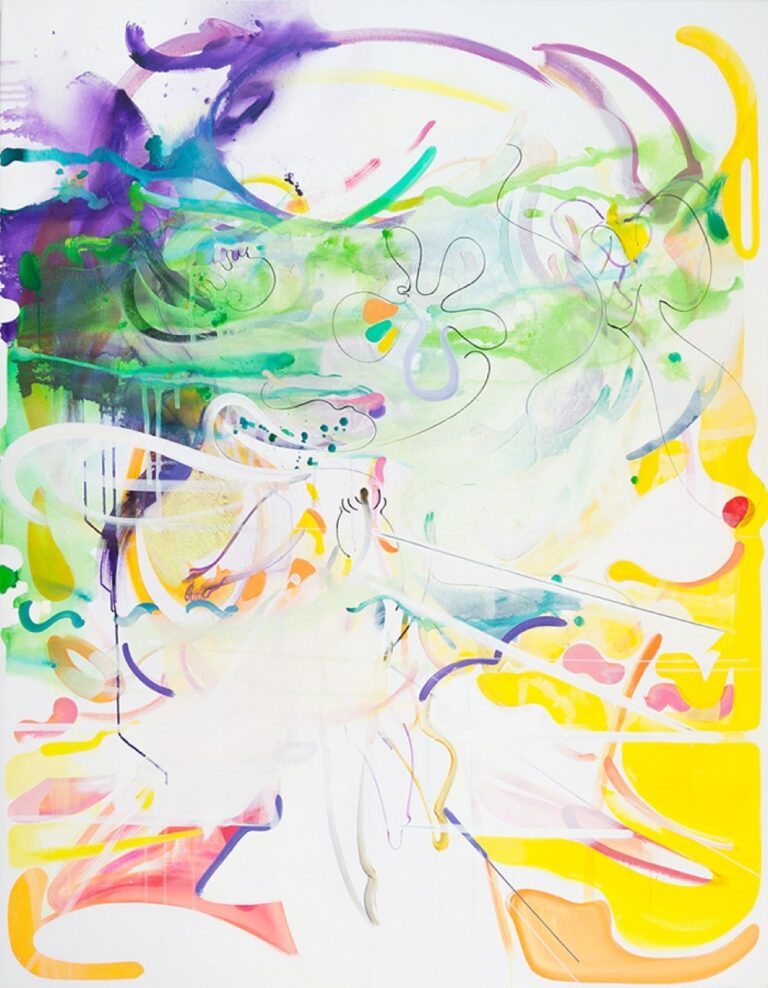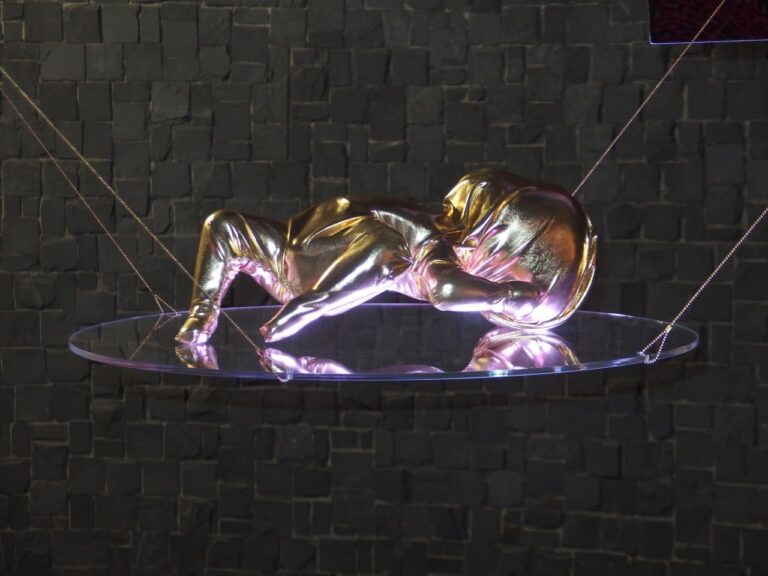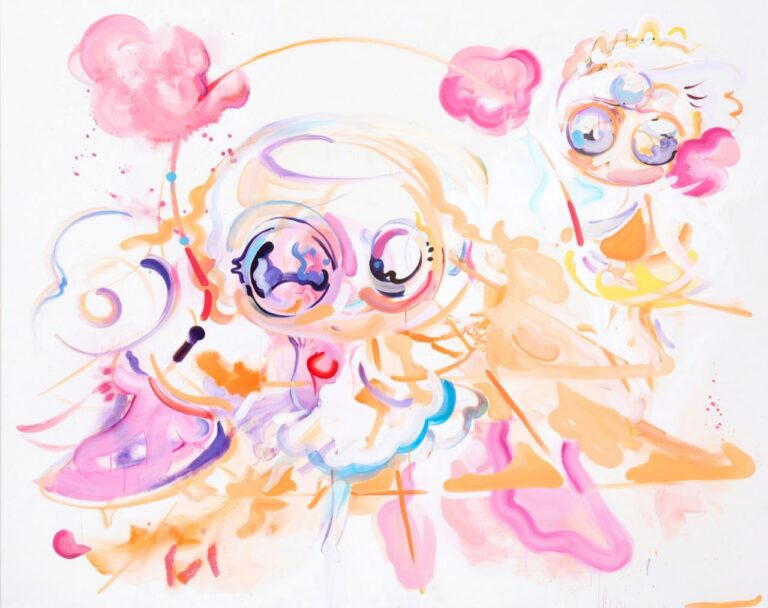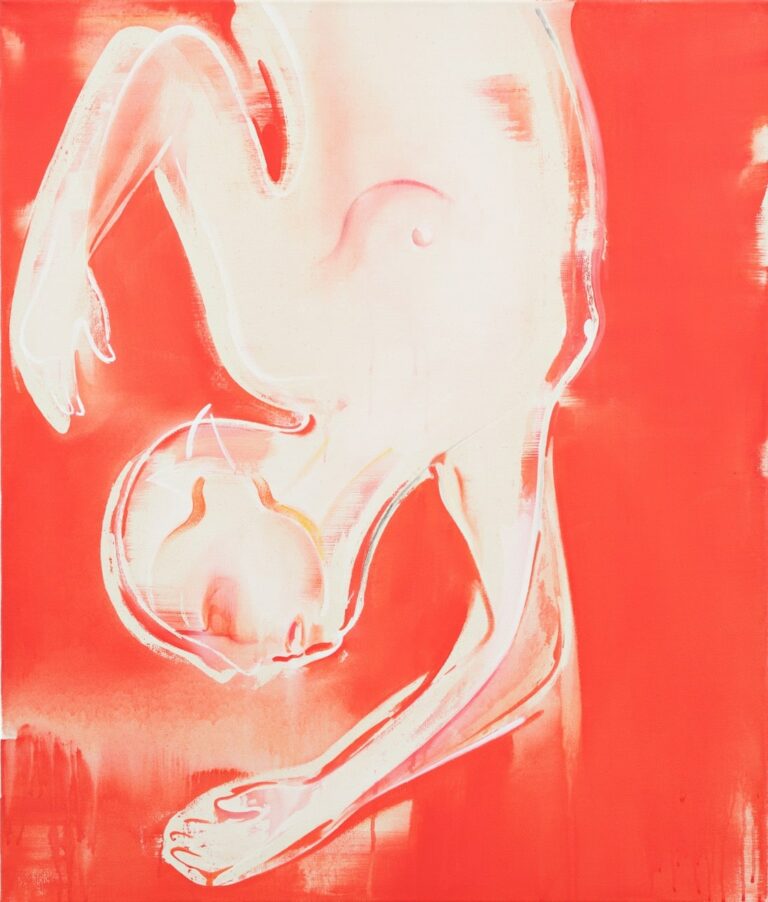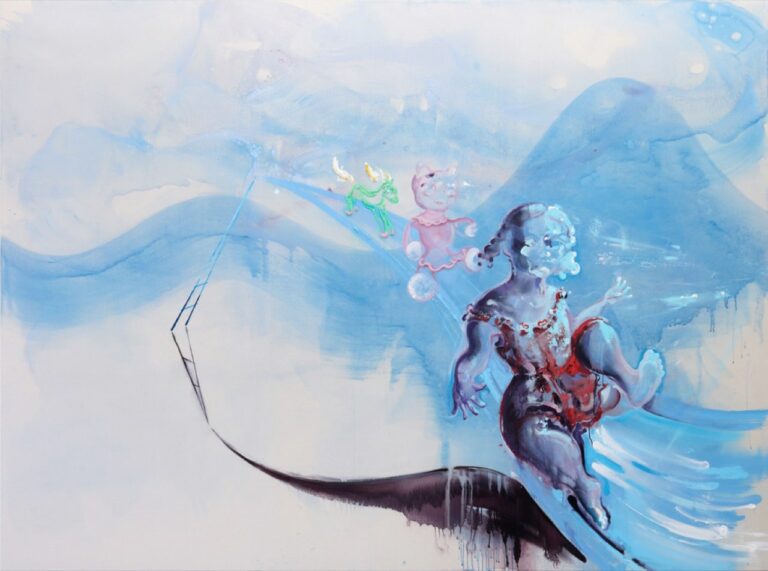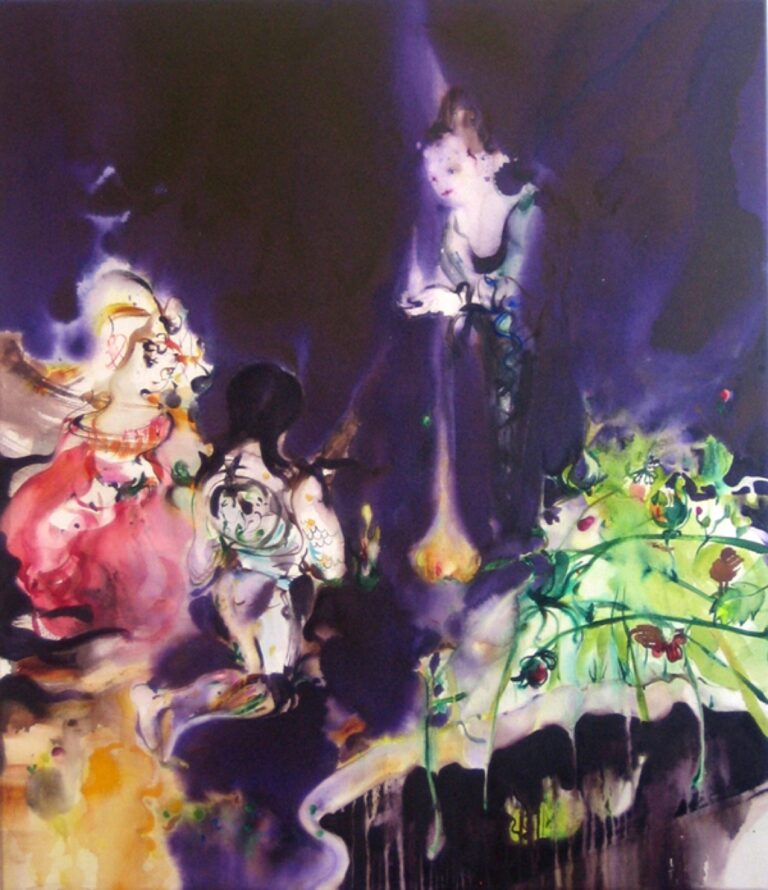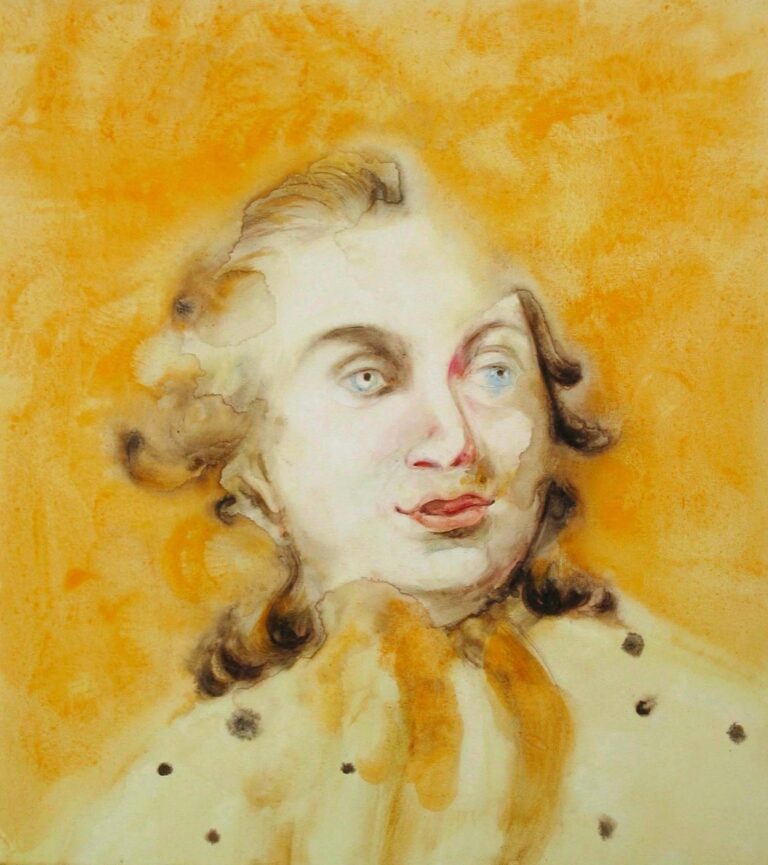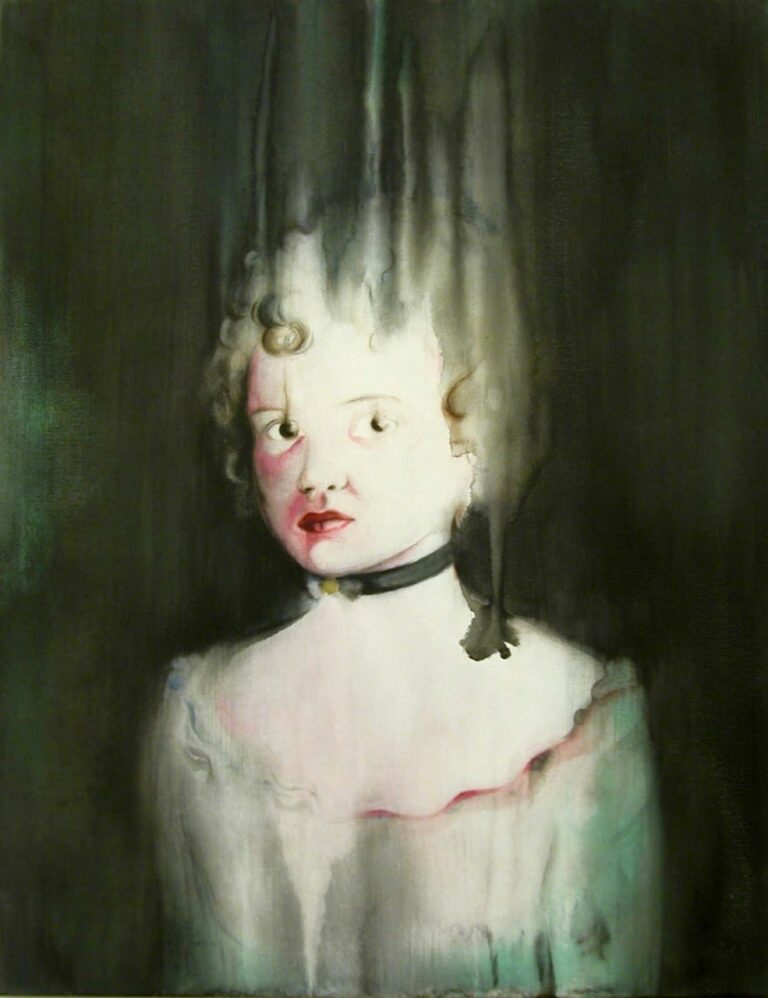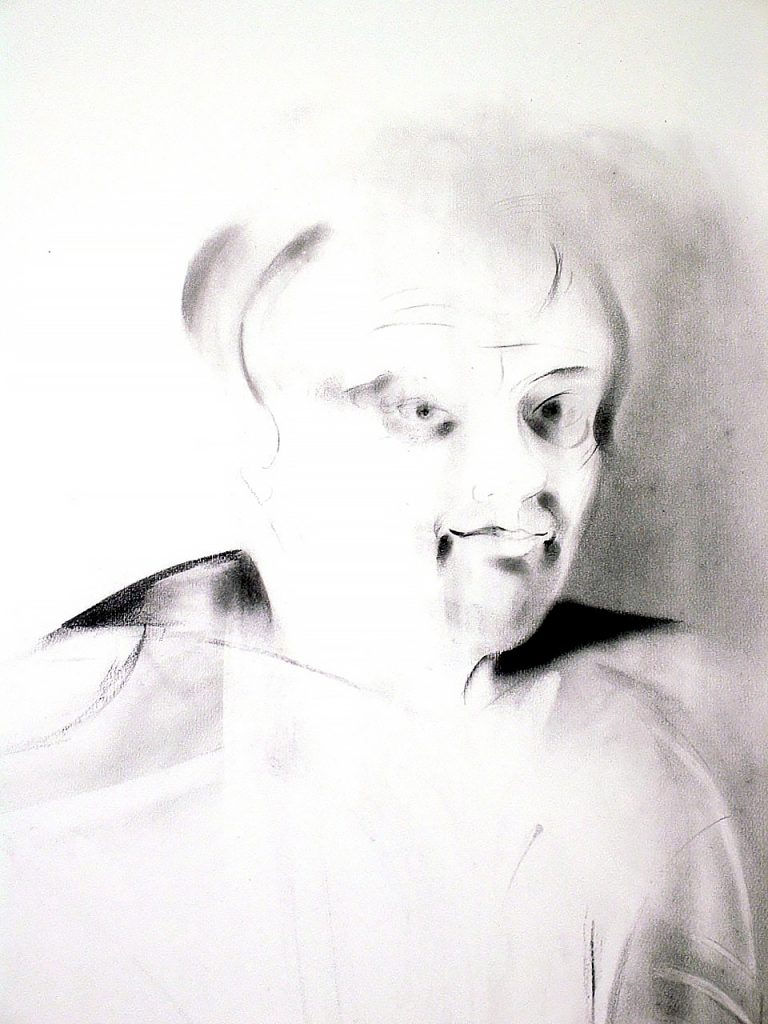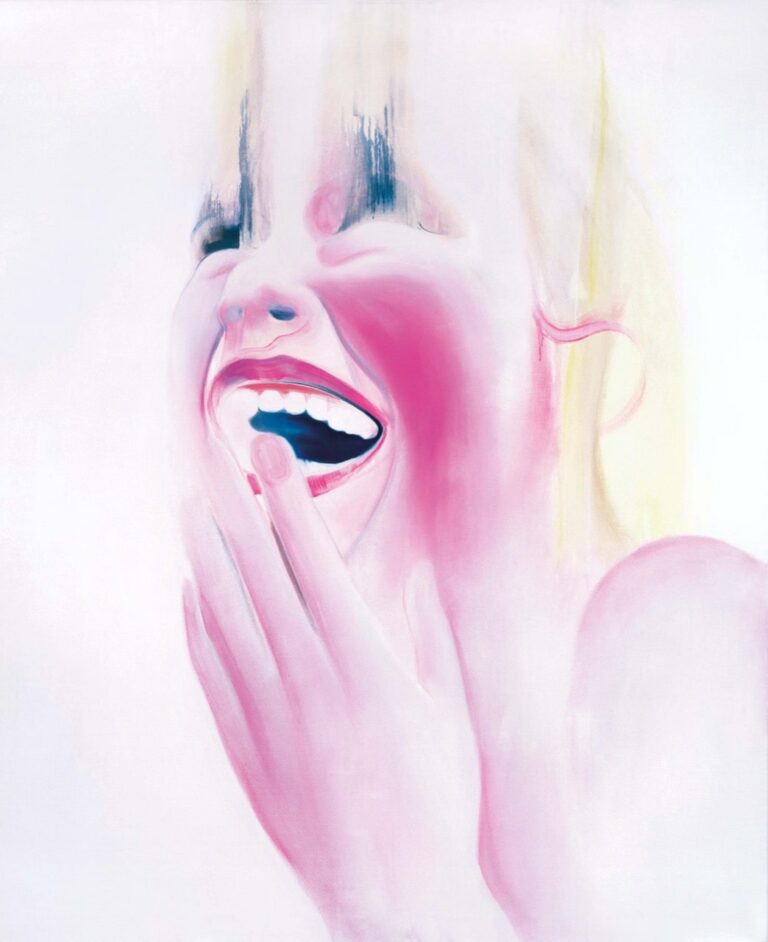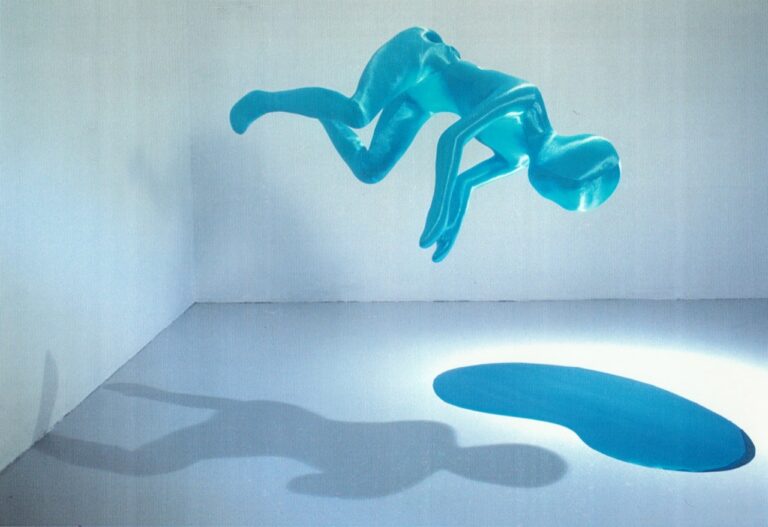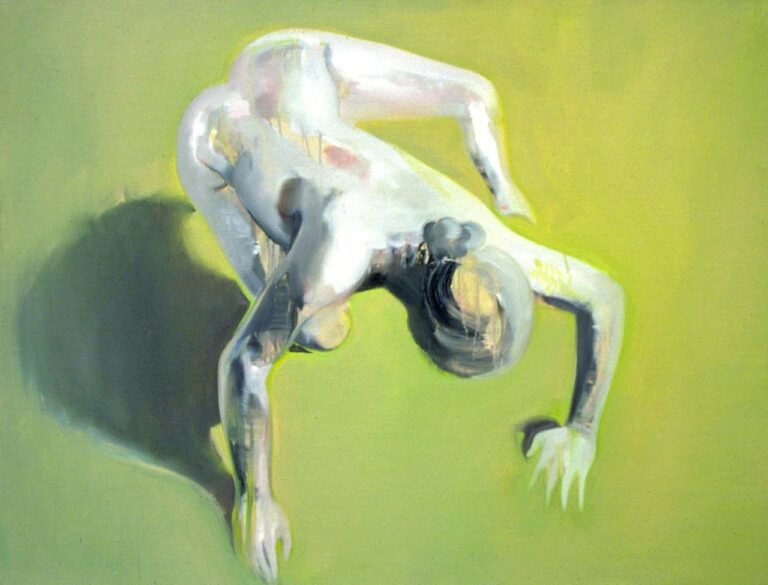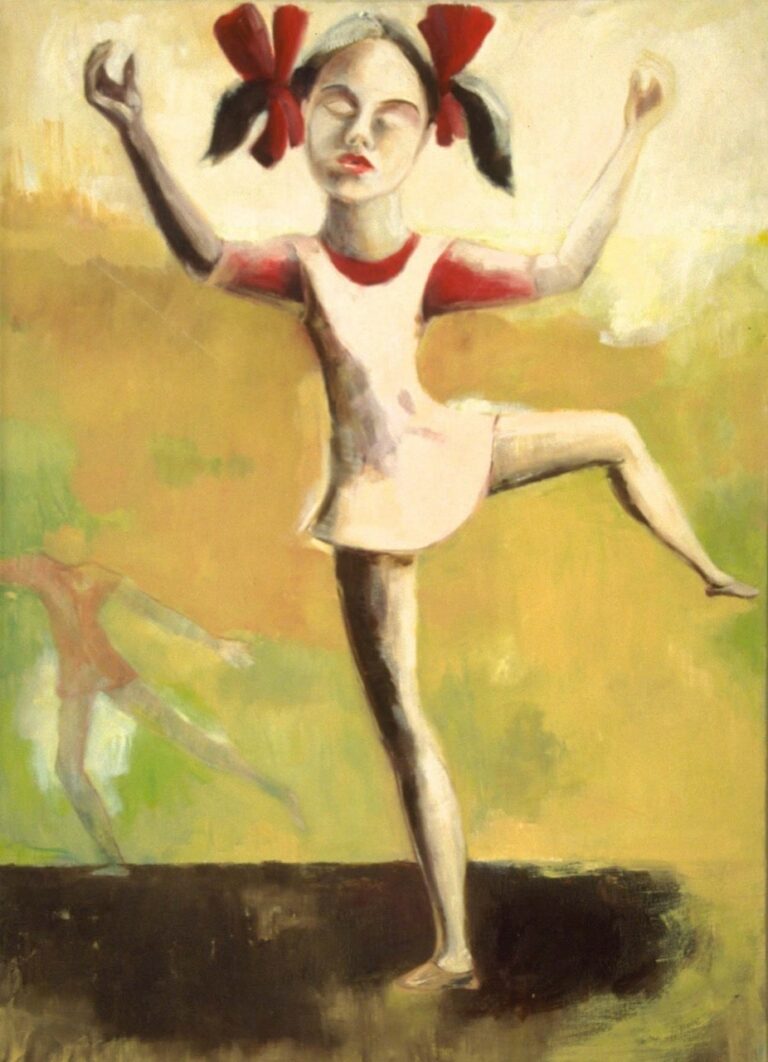It’s already there!
If you wanted to explain painting, language is surely not the right means to do so. It’s much too concrete, arduous, time-based and cumbersome. A flirt could come closest, a coquettish and elusive approximation. This is the quality one can find in the personages of Bettina Sellmann’s paintings, as well as in her painting style itself, in the complex, association-inviting spaces she opens up by means of color, color handling and absurd or matter-of-fact descriptive titles.
“It‘s glam-magic!“
Her painting is glamorous and magic, but also “glam“ as in glam rock and simply “magic“ as in Queen’s song “It’s a kind of magic“. The girl in a sun-dress who is sliding towards the viewer as if on a slide or wave is accompanied by two apparitional pals: one is a horse, drawn in peppermint-green, cake frosting pastiche paint strings, with pink hooves and a yellow-whitish tail. The other one is a lively pink doll with hollow eyes, sliding closely behind her. The artist borrowed both images from the sugary, colorful toy line “My little Pony“, designed especially for girls. Since the 80s this toy has been popularized through an animation series, in the opening scene of which laughing pink and purple ponies slide down colorful rainbows. It is the projection- and -identification potential communicated by these happy-go-lucky, non-committal and, for small children, so attractive figures of an idyllic world that Bettina Sellmann makes transparent in her painting and gives a new spin. The artist abducts toys and girl from their context of consumerism, bestows them with ambivalence and sends them out on a downhill slide into the unknown: beyond reality, beyond commodity, beyond fairy tale. It is logical that in the process the girl’s face and dress dissolve into paint, foam and curlicues. Where borders are being shifted, safe identity attributions must vanish, too, and the childlike unselfconsciousness is gone.
The little yellow girl from “A Girl, a Swing and an Unwritten Letter“ has a frightened look on her face, as if she has spotted something terrible. She seems to just have swung over from a Balthus painting into Sellmann’s flowing turquoise painting space. It is as if the girl is just about to get entangled into the four lines of illegible writing. Images and words don’t have it easy.
And painting is more than an immediate, material experience of paint on canvas. The image comes to life in the head of the viewer, through the interplay of diverse factors.The virtuosity of painterly expression amplifies the meaning, because without the provocatively fluffy verve of Sellmann’s lines, her often gossamer watercolor-like paint surfaces, her pastiche relief-like worked details or the illusionistic figures, it would be harder for the viewer to experience the weightlessness of possibilities. The artist uses colors in combinations often so perfidiously artificial and downright toxic that they add an uncanny facet to an ostensibly easy-going girly palette.
Still, the approach to Bettina Sellmann’s paintings has the air of the lightness of a flirt. The word sounds old-fashioned, but, especially in times of the prevalence of sexually explicit imagery, the openness of a flirt becomes subversive as a play of hints, with the inherent uncertainty if there is more than just auto-suggestion or projection behind the seeming attentiveness. Is it not about bearing the tension between the binding and non-binding?
The figures in Sellmann’s paintings move about self-sufficiently, on a painting plane of freed-up sensuality (Marcel Duchamp talks about the “stupidity of the painters“) and at the same time within a space of poetic connotations. This way they can also be recognized as protagonists of a narrative about art in general, mirroring an enthrallingly multifaceted, sensual relationship between viewer, image and artist.
In another painting, amidst a black-violet tempest of colors with yellow lightning flashes, are the words: “It’s already there“. One identifies a toy figure appearing out of paint fogs into visibility, as if stepping from the depth of pictoral meaning into the surface of the painting, accompanied by psychology, the world of consumer goods, reality. But it is already there, the image. Even without words.


